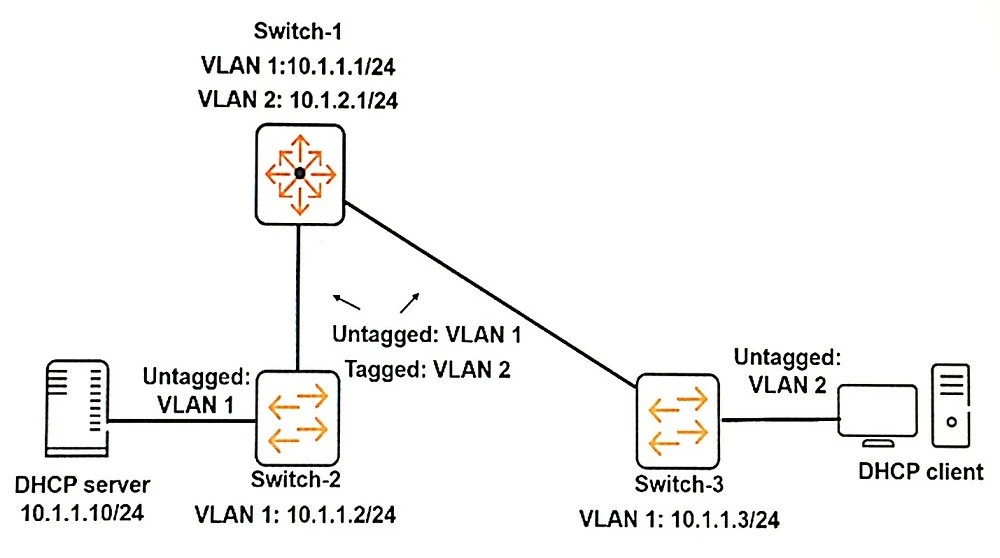A network administrator can load two operating system image files on an ArubaOS switch. ArubaOS switch supports the primary and secondary image system, meaning the administrator can upload and switch between these two images.

Originally, all four switches had the same region configuration. VLAN 14 was added to Switch_D and then mapped to instance 2.
How does this affect the MSTP topology?
When there is a mismatch in VLAN-to-instance mapping in MSTP between switches within the same region, the switches will consider it as a configuration inconsistency. This causes one of the uplinks to be blocked to prevent potential loops and preserve network stability. In this scenario, the mismatch will cause one of the uplinks between the switches to be blocked for all traffic on both Switch_C and Switch_D, thereby resulting in a loss of load sharing.

The network administrator wants to place contractor clients and employee clients in different broadcast domains.
How should the administrator achieve this goal?
To place contractor clients and employee clients in different broadcast domains, the administrator should assign the switch ports connected to contractor clients to one VLAN and the ports connected to employee clients to another VLAN. Extending the VLANs between the switches ensures that the VLAN segmentation is maintained across the entire network. This approach divides the network into separate broadcast domains, isolating the traffic between contractors and employees effectively.

All of the switches shown in the exhibit are ArubaOS switches.
Where should the network administrator configure an IP helper address of 10.1.1.10?
The IP helper address is used to forward DHCP requests from a different subnet. In this network diagram, the DHCP server is in VLAN 1 with IP 10.1.1.10/24, while the DHCP client is in VLAN 2. Switch-1 is connected to both VLAN 1 and VLAN 2, making it the appropriate switch to forward DHCP requests from VLAN 2 to the DHCP server in VLAN 1. Therefore, the IP helper address of 10.1.1.10 should be configured on VLAN 2 on Switch-1.
The throughput for a wireless client's traffic is less than the data rate and can be influenced by various factors including the number of clients in the cell. In a wireless environment, the theoretical maximum data rate is rarely achieved due to factors such as signal interference, protocol overhead, and the number of devices sharing the same wireless medium. These elements can significantly reduce the actual throughput experienced by each client.